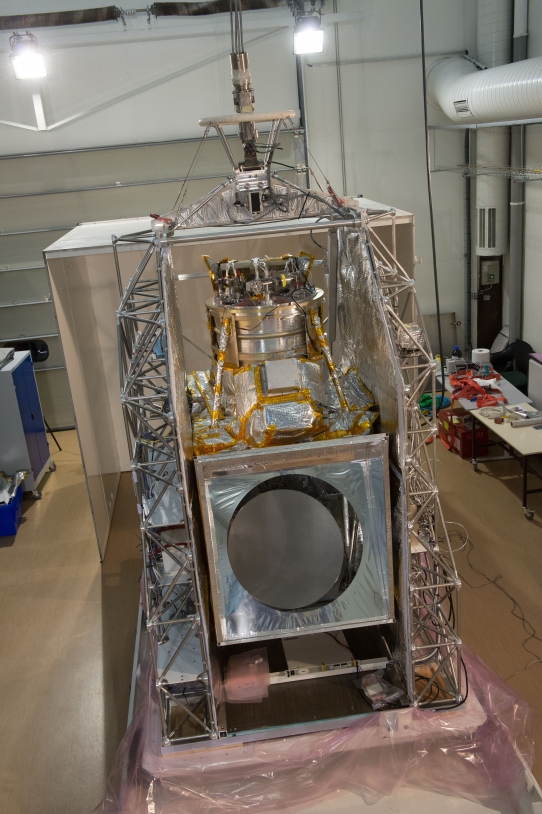PILOT is an international project: several research and engineering teams, mostly European, have contributed to the Pilot mission’s design and execution. CNES (who had oversight responsibility but also played a technical role) and IRAP (the mission’s scientific supervising authority and instrument prime contractor) oversaw the French contribution to the project.
The instrument also comprises elements developed by other organisations such as the IAS (photometer) and the CEA (focal plane). Other countries such as Italy and the United Kingdom also contributed individually, but the biggest foreign contribution was provided by ESA on stray light analysis and scientific data processing.
The Pilot instrument (Polarised Instrument for Long wavelength Observation of the Tenuous interstellar medium) was designed to study the origins of the universe by detecting polarised light emissions from interstellar dust and determine their intensity.
This data can complete and refine frequency and polarisation data collected by previous astronomy missions (such as Planck, Herschel or Pronaos, European missions aboard satellites or balloons) developed to study the cosmic microwave background (CMB).
The CMB is made up of the very first light emitted by the universe; a precise description of its intensity and polarisation is crucial for scientists to validate theoretical models developed to explain its evolution.
In this context, Pilot represents a major step to characterise emissions from interstellar dust, which constitute parasitic signals drowning the ones scientists are trying to detect. Pilot could help correct the effect of those signals, and improve our understanding of magnetic fields in target areas and their effect.
To ensure it remains undamaged during these flights, the Pilot instrument is mounted on a tailor-made open gondola, designed and developed by CNES. This gondola combines sturdiness to survive harsh flight conditions (especially when landing) with a lightweight structure. It also provides the instruments with every service available on a spacecraft bus, an essential aspect to complete the mission.
The gondola also provides real-time positioning data and can aim the payload towards a target area with great accuracy. Pilot is a “pointing” gondola, a CNES speciality which is greatly appreciated by the global scientific community.
The ESTADIUS daytime star tracker, developed by CNES at the same time as the Pilot gondola, determines the gondola’s position based on a star catalogue and is accurate to 1 arcsec (1/3,600°). This device is a key element for the pointing apparatus and is particularly useful during balloon astronomy missions, by day or night.
The first Pilot flight took off from Timmins base in Canada and flew with an open 800,000 m3 CNES high-altitude balloon from 20th to 21st September 2015.
Once the flight was completed, gondola and payload were recovered and brought back to France to be dismantled, in order to check test and improve performance for the flights to come. Then everything was put back together and validated once again, ready for a longer second flight which should yield even better results. This second flight should also offer the opportunity to observe other areas of the sky which weren’t visible from the northern hemisphere and are particularly interesting to the science team. Needless to say, they can barely wait for lift-off!
After final testing of the gondola’s attitude in the context of scientific observations, the departure was authorised following the Launch Aptitude Review held on 5th December 2016. Pilot will leave for Australia before the end of the year; the Australian flight is scheduled to take place between late March and mid-April 2017.
Flight operations will be conducted on site, in real time, the CNES Balloons division’s instrument and science teams (with the help of pointing and integration support teams). This group of experts is very small compared to those working on satellite missions. However it remains crucial in piloting such a complex instrument in a limited time, especially when taking into account real flight conditions (weather, moving sky, last-minute schedule modifications, flight altitude and temperature, etc.) which require constant rigorous monitoring. This is where the return on investment is maximised.
Scientists involved with the project are requesting at least one more flight for 2018 or 2019. The date and launch site (Australia, Canada, Sweden) will depend on the results obtained during Pilot’s second flight, evolving scientific priorities, and scheduling requirements and conditions, as the Open high-altitude balloons (BSO) flight campaign involves several scientific flights.
